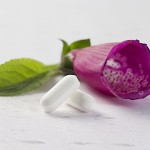How does the homeopathic concept ‘like cures like’ make sense?
Homeopathy is based on the core principle that ‘like cures like’ i.e. a substance which can cause symptoms if taken in large doses, can be used in minute doses to treat similar symptoms.
The idea that a substance can be damaging in large amounts, but beneficial in small amounts is not new to science, in fact this concept (‘hormesis’) has been around for decades and is increasingly well documented in such fields as biology and toxicology.
There are even examples of ‘like cures like’ in conventional medicine e.g.
- Digitalis in high doses causes arrhythmias, but this drug is used routinely in low doses to treat this condition
- The stimulant amphetamine-based drug Ritalin is used to treat Attention Deficit Hyperactivity Disorder (ADHD)
- Small doses of allergens such as pollen are used to de-sensitise allergic patients.
However an important difference in homeopathy is that the medicinal doses given are so small that toxic side-effects are avoided.
Low potency homeopathic medicines (up to 12c or 24x potencies) will contain molecules of the original substance they are made from. For this reason, in most countries, remedies made from toxic substances are only available in higher potencies, from the ‘first safe dilution’ upwards.
It is the higher potencies, which do not contain molecules, which are most controversial as we do not yet understand their mechanism of action.













